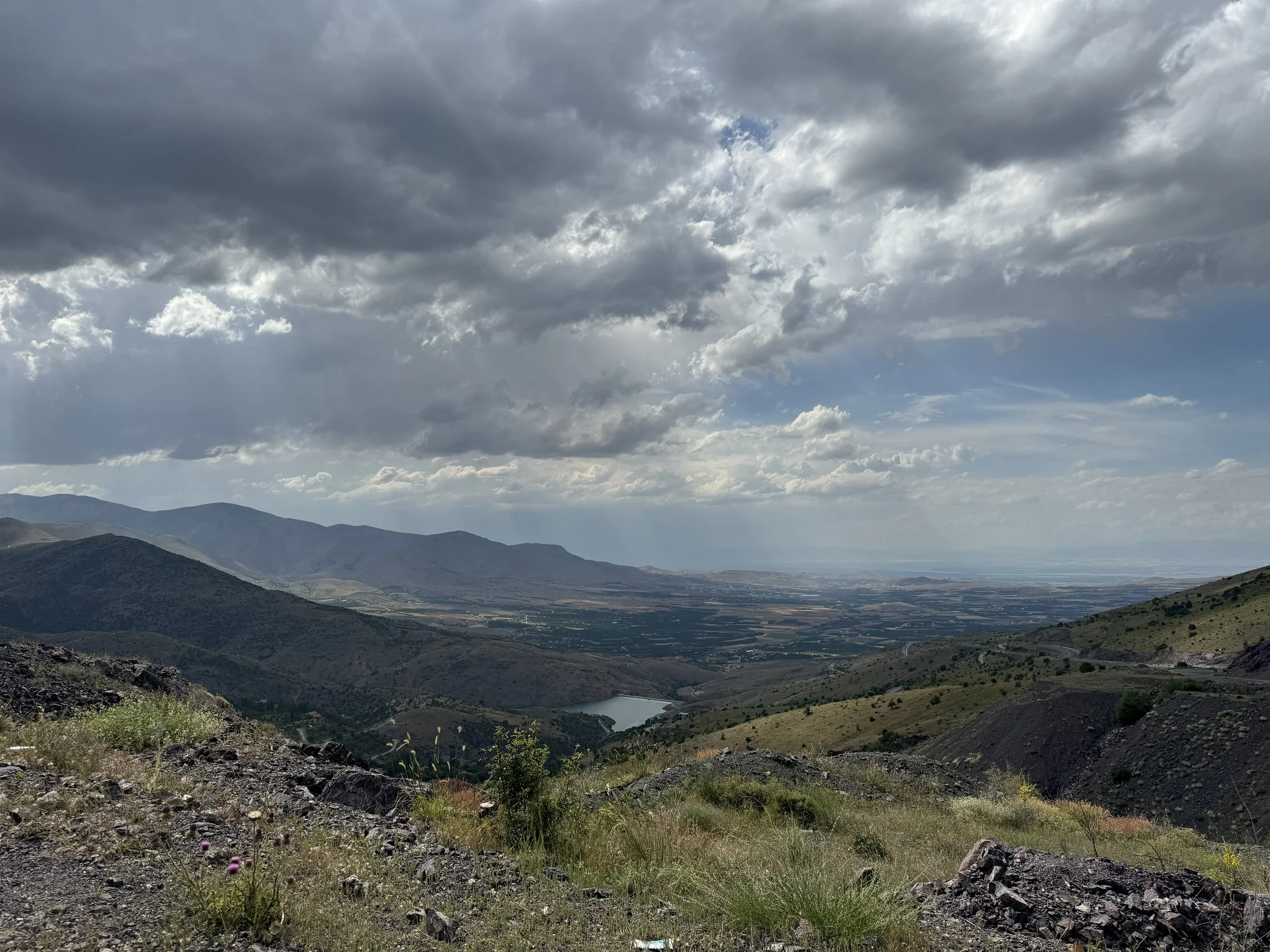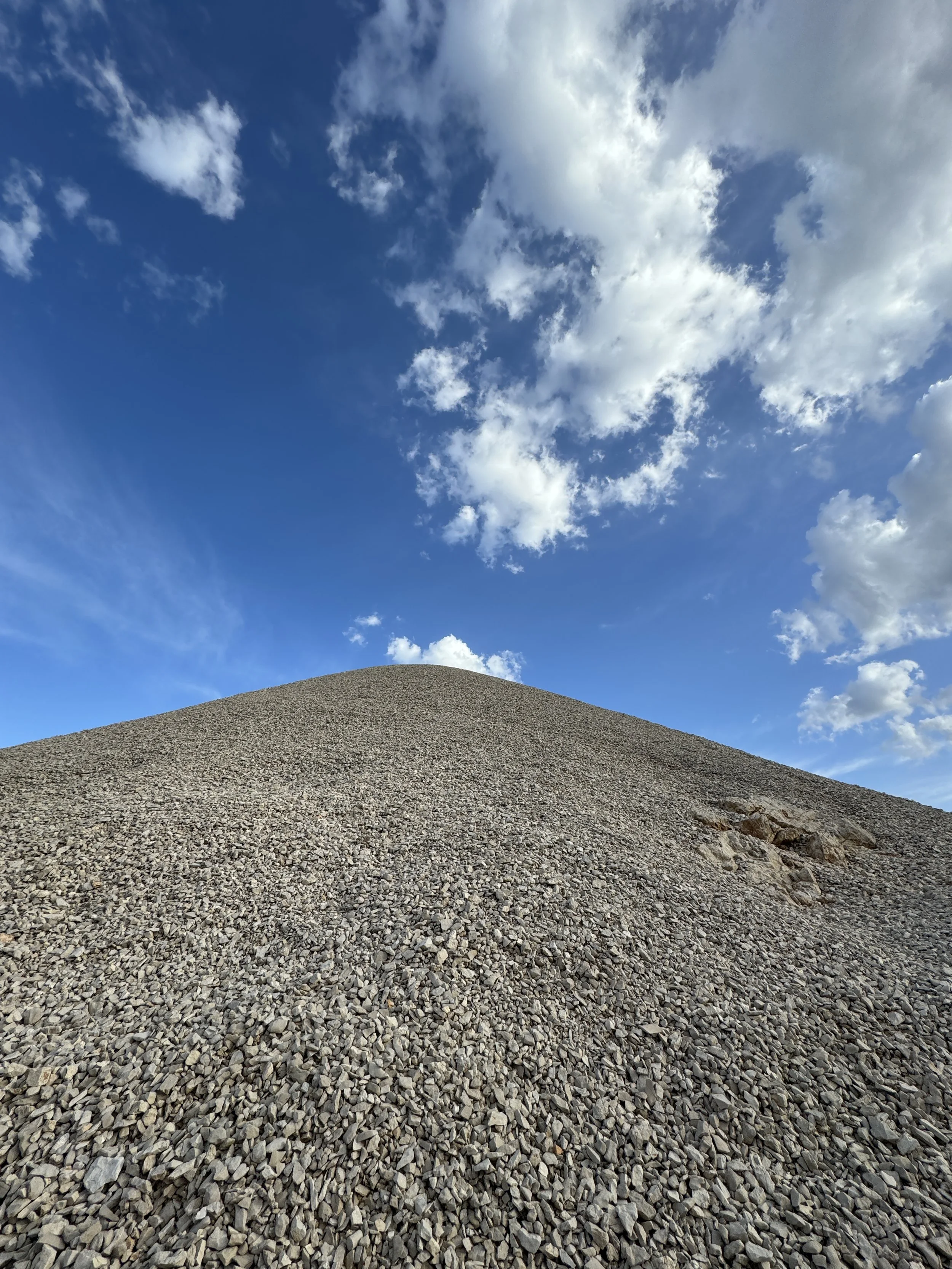Türkiye - Day 4: Cappadocia to Nemrut Dağ
Nemrut Dağ - All photos © Rose Cameron 2024 Unauthorized use, reproduction, or distribution is prohibited. This post may contain affiliate links. More Info Here
“I can't go back to yesterday because I was a different person then.” ― Lewis Carroll, "Alice's Adventures in Wonderland"
As we planned our trip east, I began to see photographs of things I couldn’t imagine existed. Massive stone heads carved in giant blocks of stone, removed from the bodies and standing watch on far away mountain tops. Remote winding roads through rarely mentioned villages, places only Turks speak of with love and pride. Swinging out to Nemrut Dağ from Cappadocia added miles but there was something about this that couldn’t be missed.
What is Nemrut Dağ?
Nemrut Dağ is located in the Taurus Mountains in the Adıyaman Province of southeastern Turkey. It sits at an elevation of about 2,134 meters (7,001 feet). The site was built by King Antiochus I Theos of Commagene in the 1st century BCE - over 2000 years ago. Antiochus I ruled over the small but wealthy Kingdom of Commagene, which served as a cultural and political bridge between the Roman and Parthian empires. Nemrut Dağ is believed to be the funerary mound of King Antiochus I, who constructed the site as a tomb-sanctuary. The site reflects a unique blend of Greco-Persian cultural influences. The statues are:
King Antiochus I - He is depicted seated, wearing regal attire, signifying his divine kingship and his claimed descent from both Greek and Persian gods.
Zeus–Oromasdes: A syncretic deity combining elements of the Greek god Zeus and the Persian god Ahura Mazda (Oromasdes). He is depicted as the supreme god.
Apollo–Mithras–Helios–Hermes: Another syncretic figure, blending the characteristics of the Greek gods Apollo and Hermes with the Persian god Mithras and the solar deity Helios. This statue represents the god of the sun and light.
Heracles–Ares–Artagnes: This statue merges Heracles, the Greek hero known for his strength, with the Persian god Ares and Artagnes, another deity associated with strength and protection.
Kommagene–Tyche: The goddess of fortune and prosperity, representing the region of Commagene itself. This statue symbolizes the wealth and well-being of the kingdom.
Eagle: An eagle is depicted beside the gods, symbolizing the connection between the heavens and the earth and acting as a divine messenger.
Lion: A lion is also present, symbolizing power and protection. One of the lions is part of the famous "Lion Horoscope" relief, which depicts astrological symbols.
The Journey to Nemrut
The trip from Cappadocia to Nemrut Dag is somewhere around 7-8 hours. I should say 7-14 hours depending on which way you go, and trust me, we went the long way! Our plan was to drive out to Mount Nemrut (Dağ is mountain in Turkish), and head up to the summit for sunset, then quickly back down to our nearby hotel. My research yielded a handful of facts: people took tour buses to the summit base and walked up, there were many stairs, there was an easier way to ‘drive up’ and basically be there, there was a sketchy dirt road, and the hotel was nearby. What I didn’t realize is that we should have called the hotel to make sure we were going the right way and asked locally for directions. Simply because you can go up one way doesn’t mean you should! Our drive took us substantially longer than intended.
We marveled at how the scenery changed from Cappadocia as we began to head into the Taurus mountains. We climbed higher and higher by car, stopping briefly to grab water and some roadside tea and snacks. We rescued a turtle who was taking his time in the middle of the road and subsequently learned that turtles can pee quite a lot! The road increasingly narrowed, zigging and zagging in tighter turns until we finally made it to the base of Mount Nemrut. We were greeted by an entry fee and a gate across a dirt road. Looking into the distance I could see an even narrower, ziggier, zaggier dirt road that judging by some quick math of the distance versus the elevation was going to have some serious switchbacks. I’m not a massive fan of off-roading, and even less in our little FIAT that barely could, but we were too close to turn back. With a lot of swearing (from me) and courageous driving (from Z), we made it to where a handful of cars was parked right freaking near the top!
Imagine my confusion when I peered over the other side of the mountain at the nice paved parking lot where the tourists were streaming in from! The smooth asphalt, the wider road, the stairs leading up to the overlook. I realized we may have made a wrong turn…hours ago. Nevertheless we were here, and ready to stand witness to the greatness of the Commagene Empire with King Antiochos and friends.
Nemrut Dağ
It is windy. Do not underestimate this being Mount Nemrut and depending on the month you may need anything from a jacket and pants to a parka and snow boots. We quickly layered upon arrival. Not knowing what to expect we grabbed a backpack with water and took off up the road. Please keep in mind we are on the non-road side, so our approach was very easy (by foot). We were immediately in the Eastern Terrace and it is simply stunning. The bodies of the statues stand, resolute against a wide expanse of sky. Nothing but birds and clouds soar above them, and even they seem to duck and twist around these mighty stone beings. The heads have been removed - probably from an invading force and now sit upright on the ground beneath them. Each, massive and intricately carved. When you look back at the road we drove to get here it boggles the mind to figure out how these gigantic rocks came up the mountain. Then were carved with rudimentary tools, sanded smooth, and placed in their final positions. It would have been incredibly daunting to show up to this land and see these towering figures watching your approach.
As we head towards the Western Terrace we pass the tumulus, a massive mound that covers the presumed tomb of King Antiochus I of Commagene. This tumulus is composed of crushed rock and gravel, and it reaches a height of 50 meters (164 feet) and a diameter of 150 meters (492 feet). The loose, crushed stones create an unstable surface, making it extremely challenging to excavate and potentially revealing its contents. This instability has also led to the preservation of the site, as it deters looters - a pretty advanced foresight by the King. It has an estimated weight of 1.18 metric tons - simply moving that rock UP there would have been an enormous feat.
The Western terrace, where I spot the nice parking lot and paved road, is home to more statues and impressive reliefs. I was surprised that in addition to the blend of Greek, Anatolian and Persian cultures, there was the presence of a pretty advanced horoscope relief. The "Lion Horoscope" at Nemrut Dağ depicts a lion adorned with astral symbols - considered one of the earliest known representations of astrology. The lion is portrayed with 19 stars along its body and a crescent moon over its shoulder, symbolizing the moon. Above the lion are three more prominent stars, identified as the planets Jupiter, Mercury, and Mars. These planets are aligned in a configuration that corresponds to July 7, 62 BCE. - which would have been significant for King Antiochus - a birthdate or coronation date perhaps. I was in awe of the Commagene culture, blending elements of Greek, Persian, Anatolian gods and astrology to boot. In today’s modern world where all we seem to do is find differences to fight about, this king from 2,000 years ago reminds us how powerful it can be to unite instead of divide.
The Long Road Home
Now, as we were standing on the summit looking down at this very nicely paved road and parking lot I wondered where in relation to our parked car our ‘nearby’ hotel was. Imagine my dismay when Google Maps displayed us on the ‘wrong’ side of the mountain and our drive would be in the 90-minute minimum range. Shortly before the sunset we head back down the ziggy-zaggy slippery dirt road and began to head out. Cell service out there is hit and miss and it was going to get dark. The drive was eventful - hairpin turns, narrow roads and a mix of potholed asphalt, cobble stones and a stretch of unpaved rocky dirt that was so long and treacherous we sincerely doubted the turn we made onto it, but it was our only option. We finally arrived at the Tarih Otel Nemrut (which has a much easier route of getting there if you go the correct way), and were warmly greeted by the family and staff that operates it.
Evening Wind Down
I’ve been to a number of mountain hotels and hostels all over the world and the Tarih fit the bill just right - great location (had we gone the right way), simple layout (rooms, a pool, nice patio and gardens, a restaurant). The hotel is family run and is still going through some renovations, but everything was great for us. The room was clean and the grounds were quiet and beautiful. Next time we will 1.) Call in advance to confirm directions and 2.) Call in advance to give them our food requests. Due to their remote location, whatever they aren’t growing has to be procured from 40 miles or so away. We are pretty easy eaters, especially after that long of a day - and the dinner they made for us was fantastic. Nothing better than an assortment of homemade food at the end of the day. We wrapped up with watermelon and hot çay and called it a night.
Stay tuned for Day 5 in which we visit one of the best castles I’ve ever seen!

















